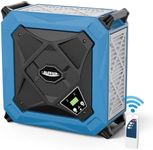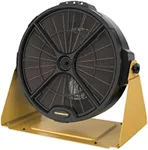Buying Guide for the Best Air Filtration For Woodshop
Choosing the right air filtration system for your woodshop is crucial for maintaining a clean and safe working environment. Woodworking generates a lot of dust and particles that can be harmful to your health and can also affect the quality of your work. When selecting an air filtration system, it's important to consider several key specifications to ensure you get the best fit for your needs. Here are the key specs you should focus on and how to navigate them.Airflow Capacity (CFM)Airflow capacity, measured in cubic feet per minute (CFM), indicates how much air the filtration system can process in a minute. This spec is important because it determines how effectively the system can clean the air in your woodshop. For small woodshops, a lower CFM (around 300-500) might be sufficient, while larger spaces may require a higher CFM (600-1000 or more). To pick the right one, consider the size of your woodshop and the amount of dust generated by your tools.
Filtration StagesFiltration stages refer to the number of filters the air passes through before being recirculated. More stages typically mean better air quality, as different filters can capture different sizes of particles. Common stages include pre-filters for larger particles, HEPA filters for fine dust, and carbon filters for odors. If you have a high dust output or are sensitive to fine particles, look for systems with multiple filtration stages.
Filter EfficiencyFilter efficiency indicates how well the filters can capture particles of various sizes. This is often expressed as a percentage or a MERV rating (Minimum Efficiency Reporting Value). Higher efficiency filters (e.g., HEPA filters) can capture up to 99.97% of particles as small as 0.3 microns. If you need to ensure the highest air quality, opt for higher efficiency filters, especially if you work with materials that produce very fine dust.
Noise LevelNoise level, measured in decibels (dB), indicates how loud the air filtration system will be when operating. This is important for maintaining a comfortable working environment. Systems with lower noise levels (below 60 dB) are generally quieter and more pleasant to work around. If you spend long hours in your woodshop, consider a quieter model to reduce noise fatigue.
Maintenance RequirementsMaintenance requirements refer to how often you need to clean or replace the filters and perform other upkeep tasks. This is important for ensuring the system continues to operate efficiently. Systems with easily accessible and washable filters can reduce maintenance time and costs. If you prefer low-maintenance options, look for systems with long-lasting filters and straightforward maintenance procedures.
Size and PortabilitySize and portability refer to the physical dimensions of the air filtration system and its ease of movement. This is important if you have limited space or need to move the system around your woodshop. Smaller, portable units are ideal for compact spaces or if you need to position the system close to different work areas. If you have a larger, fixed space, a bigger, stationary unit might be more suitable.
Installation and SetupInstallation and setup involve the ease of getting the air filtration system up and running in your woodshop. Some systems are plug-and-play, while others may require more complex installation. If you prefer a hassle-free setup, look for systems that are easy to install and come with clear instructions. Consider your comfort level with installation tasks when making your choice.
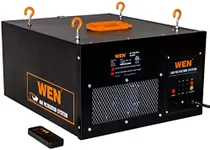
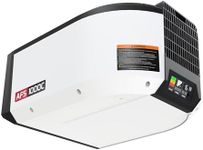
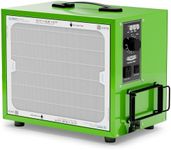



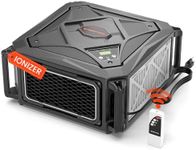
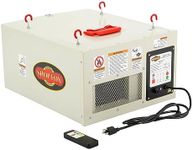





![IMPRESA [2-Pack] Drill Dust Collector for Projects with Power Drills - Traps Dust & Debris Caused by Cordless Drill - Pocket-Sized Drill Bit Set Accessory - No Extractor Vacuum Necessary](https://images-proxy.bestreviews.guide/LUpw2jlV15hvSXlxSq_nWCme2ac=/0x150/https://m.media-amazon.com/images/I/31aU7yhcvsL._AC_CX679_.jpg)

